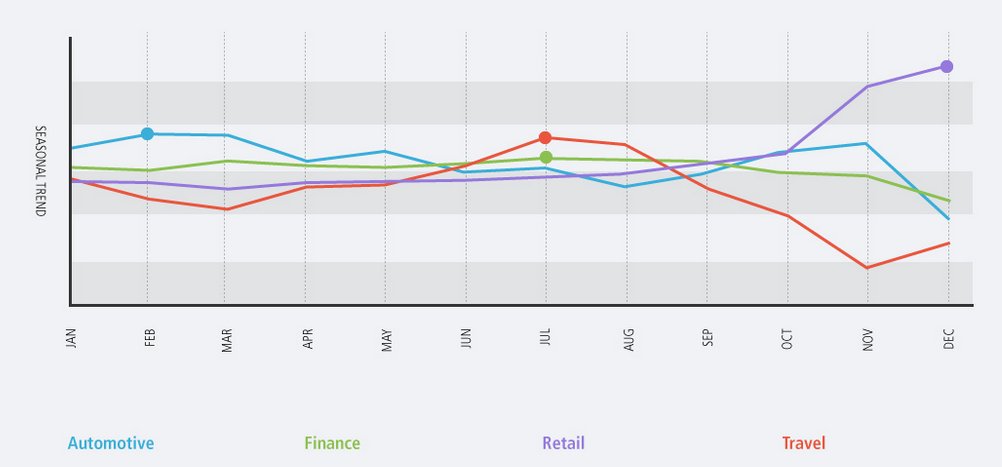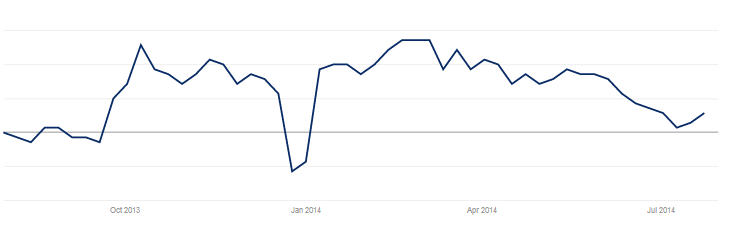Seasonal traffic dips can be frightening. One week, you’re on top of the world and traffic to your site is climbing – sometimes doubling or even tripling. But the next time you check, you’ve suddenly slumped into the red and you’re wondering what went wrong. Seasonal traffic trends can play a huge role in web marketing success, and historic content analytics reports can help you anticipate when users will be looking for your products … or not.
If you don’t have access to that information (perhaps Google Analytics wasn’t tracking data then, or the website was recently launched, etc.), it helps to see how your industry fares overall. Here’s a cheat sheet using U.S. Google Trends and data that was compiled by WhosOn that can help:
Automotive industry:
- Gets steady traffic throughout most of the year
- Experiences spikes at the end of April and the 4th of July
- Sees dips in June and November
Finance Industry:
- Gets most searches between January and April
- Experiences a major uptick at the end of January
- Sees fewer searches between May and December with a big dip in November
Retail Industry:
- Gets steady traffic throughout the year with a higher search volume in November
- Experiences a huge pickup in searches starting at the end of October
- Sees a slight dip in March
Travel Industry:
- Gets the most search traffic between April and August
- Experiences a strong surge in April that continues through the summer
- Sees a big dip in August and again in November
Technology Industry (Enterprise):

- Gets steady traffic throughout the year with an uptick in April
- Experiences a surge of search traffic in April and late summer
- Sees a traffic dip in January
- Gets the most traffic between October and June
- Experiences a traffic increase in October and March
- Sees a huge traffic dip in January and July
There are a lot of reasons for these traffic hills and valleys – consumers look to make vacation plans during the spring, and search for sporty convertibles in the summer. Business decision-makers are vetting solutions when they get their annual budgets, but conduct less research during the summer when execs are out of the office.
A good content marketing strategist can help you spot these trends and plan for them, so get the most visibility during peak season and find ways to steal the spotlight back during times when traffic is notoriously slow.







